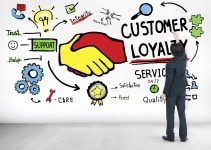Teams are a critical part of today’s workforce. One wide-ranging study across industries found that 75% of cross-department teams are dysfunctional. Some of the reasons for failure include problems with coordination, motivation, competition, and waiting too long to address these issues. This article discusses using assessments for effective team development to build trust, mitigate conflict, encourage communications, and increase collaboration.
1. Define the hallmarks of a strong team
Before using assessments to uncover performance issues, identify how your company defines the hallmarks of a strong team. Typically, the strongest teams are characterized by transparent and fair communication. They also have more clarity about the team’s purpose and goals and thus more accountability. Abstract annual goals aren’t enough. Teams need shorter-range, compelling, and clear goals that unify and galvanize them on shared purpose. Team members should feel a sense of personal ownership and have a shared intention to accomplish the results they’ve committed to the team.
2. Understand the roles each team member play on teams
To understand how assessments can improve teamwork, managers must consider everyone’s personality, social style, skills, and thought process. An effective team requires various personality types that can assume different roles, such as action-oriented roles, people-oriented roles, and thought-oriented roles. Assigning team roles according to employees’ strengths and shortcomings is an effective way to build a team, as people fare better at tasks that draw on their strengths. Several assessments can help managers assign team roles by identifying everyone’s motivations and objectives.
3. Understand the collaboration in team assessments
Synergy relies on two things – individual strengths and effective collaboration. Measuring collaboration in companies is done by quantifying and interpreting changes in team performance. When measuring collaboration success, focus on quantifying association, collecting data used to measure the cooperation, and using data results effectively. Select a set of actions you believe contribute to team collaboration, assign measurable values to these actions, and set specific goals to which you can track progress. Having well-defined team targets helps people feel more motivated to put in the effort and feel a greater sense of belonging when they achieve their goals together.
4. Choosing the proper assessment tools
No single assessment works for all situations or teams. Each has its strengths and weaknesses. Some assessments focus on how individuals contribute to groups; others focus on the team, evaluating the team’s processes and the quality of their results. Before selecting the assessment tool, isolate what you want to learn about your team. Are you hoping to understand team members’ personalities better? Are you looking to gauge the quality of team processes, such as communication or delegation? Are you trying to assess your team leader’s leadership skills? Are you measuring team collaboration and team performance? Or are you using these assessment tools to build understanding and trust in your group? Whatever your goals are, always aim to address the most significant problems first, and make sure to select the assessment tools that match your needs and objectives.
5. Communicate the values of assessments with the team
Different assessments are designed for various purposes, even within each broad assessment category. It’s essential to understand precisely what an appraisal is measuring and how, so you can determine if the evaluation is suitable for you. Anyone leading assessment efforts should be ready with a brief explanation on:
- What challenges, problems, or issues does assessment address for the individual, team, and the company?
- What values does it add, or how does assessment help solve the identified problems?
Conclusion
Organizations that can foster a culture of collaboration have a distinct advantage over competitors. Assessments that focus on team processes and individual team members can help companies identify a team’s strengths and dynamics and areas for improvement. They also provide reliable metrics for reassessment to see whether a team is making progress. And lastly, participating in team assessments can be a way for a team to revisit its purpose and strengthen its commitment, making meaningful performance improvements.




